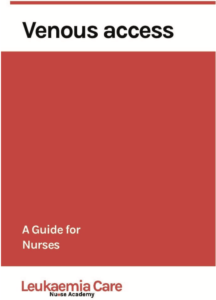Venous access is the access to the bloodstream via the veins.
Venous access is required for
- Intravenous (IV) treatment administration such as medication or fluids (blood or rehydrating fluids) and nutrition if required
- Obtaining repeated venous blood samples
- As an access point for blood-based treatments such as dialysis or apheresis.
– Apheresis involves removing whole blood and separating its individual components to remove one particular component. The remaining blood components are re-inserted into the patient’s bloodstream.
Simple IV drug administration can be given as:
- An IV infusion where continuous blood levels are required such as antibiotics, antifungals, and pain-inhibiting drugs such as morphine and other opiates
- A ‘bolus’ of medication over 1–30 mins, however bolus IV administration is infrequently used and often restricted to emergency situations.
- By administering a drug intravenously, a first-pass metabolism of the drug, where it is metabolised rapidly after administration is avoided. Therefore, a significantly higher concentration of the drug can reach the systemic circulation, allowing a more immediate effect.
To help you complete this course, we have created a PDF to be used alongside the course content.
What will you learn in this module?
- Different types of venous access
- Long-term central venous catheters (CVCs)
- Use of CVCs in haematopoietic stem cell transplantation
- Standardised procedures for tunnelled CVCs
- Guidelines for tunnelled central venous catheters
- Patient safety and wellbeing
A self-assessment test is included at the end of this module for you to assess your knowledge.
Time to complete this course: 1 hour
Date of publication: June 2021
Reviewed and updated: June 2024
Course Content
Ratings and Reviews
0.0
Avg. Rating
0 Ratings
5
0
4
0
3
0
2
0
1
0
What's your experience? We'd love to know!
Login to Review
What's your experience? We'd love to know!
Login to Review


